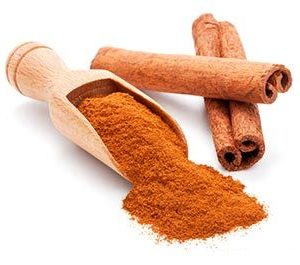A perennial in the mint family of plants, thyme is a small, attractive herb with a plethora of small, white, pink or lilac flowers. Incredibly, there are more than 300 known thyme species, all with their own uses in the garden and kitchen.
Thyme can be upright or low-growing, with leaves varying in color from deep to paler shades of green, some with touches of olive, silver (one of the hardiest) or bronze. Common thyme (T. vulgaris) or lemon thyme (T. citriodorus) are popular for cooking, but are also used for medicinal purposes along with Spanish (T. zygis) and creeping thyme (T. serpyllum), thanks to their thymol content.
These are native to Spain and the Mediterranean region, as well as Asia Minor and now cultivated commercially in many areas around the globe.
Thyme leaves lend an earthy aroma to casseroles, soups, stews and sautéed vegetables. When chopped fresh or dried and combined with parsley and bay leaves, thyme is included in the French combination of herbs called bouquet garni, used to season stock, stews and soups. Eggs, meats, fish and bean dishes can all be enhanced with a sprinkling of thyme.
Thyme is easy to grow, especially in sunshine, and can thrive in your garden or indoors. While this herb (particularly the lemon variant) is notable for deterring garden pests like beetles, the flowers are known for the nectar they generate, which attracts bees that subsequently produce thyme-infused honey. Thyme is so versatile that it’s also sought after in the cosmetics and pharmaceutical industries.
Health Benefits of Thyme
Thyme has notably been used as an expectorant. It’s been shown to be particularly helpful as a remedy (when combined with primrose root) for upper respiratory tract problems like bronchitis, according to a 2007 study.
In order to show what kind of nutrition thyme offers, a larger amount than would be eaten provides a view of the big picture, but a teaspoon is more than enough to give you an idea. This serving contains vitamin C (1.28 milligrams), vitamin A (1.9 mcg), fiber (0.112 g), riboflavin, iron, copper and manganese, and doses of vitamin B6, folate, phosphorus, potassium and zinc.
Volatile oils in thyme include carvacrol, borneol, geraniol and most importantly thymol, with powerful antiseptic and antibacterial properties that have been shown to be effective against a host of different bacteria and fungi, including Staphylococcus aureus, Enterococcus, Escherichia and Pseudomonas.
A study on thymol reported its ability to help increase healthy fats throughout the cells and even increase the DHA (docosahexaenoic acid, an omega-3 fatty acid) content in kidney, heart and brain cell membranes. The combination of other constituents may even lower the risk of cancer. The table below provides an overview of the nutrients in thyme:
| Thyme Nutrition Facts
Serving Size: 1 teaspoon (0.8 grams), fresh |
||
| Amt. Per Serving |
% Daily Value* |
|
| Calories | 3.38 | |
| Calories from Fat | 0 | |
| Total Fat | 0.013 g | |
| Saturated Fat | 0 g | |
| Trans Fat | ||
| Cholesterol | 0 mg | |
| Sodium | 0.072 mg | |
| Total Carbohydrates | 0.196 g | |
| Dietary Fiber | 0.112 g | |
| Sugar | 0 g | |
| Protein | 0 g | |
| Vitamin A1.9 mcg | Vitamin C | 1.28 mg |
| Calcium3.24 mg | Iron | 0.14 mg |
Studies on Thyme
Thyme oil may have the ability to kill the deadly MRSA (methicillin-resistant staphylococcus aureus) hospital ”superbug” according to scientists at the University of Brighton. Scientists found it destroyed MRSA within two hours, with no adverse effects on intact skin.
MRSA is often found on the skin or in the nostrils of healthy people, but when a carrier enters a hospital for an operation or any procedure that punctures the skin, bacteria can enter the body, causing serious medical problems. In fact, it caused nearly 20,000 deaths in 2017. The study was published in the International Journal of Essential Oil Therapeutics and was carried out by a team of microbiologists.
Herbal preparations of thyme may be more effective for acne than prescription creams, according to researchers from Leeds Metropolitan University, who tested the effect of thyme, marigold and myrrh tinctures on acne bacterium.
While all three preparations killed the bacterium after five minutes, thyme was the most effective, and even had a greater antibacterial effect than benzoyl peroxide, the active ingredient in most anti-acne creams or washes, but without the skin irritation.
Thyme Fun Facts
Ancient Greeks used thyme for incense — in fact its name originally meant “to fumigate.” Meanwhile, the Romans added it to their cheese and alcohol, while soldiers bathed in thyme, as they believed it helped them become more vigorous.
Summary
Thyme is a fragrant herb known for the warm essence it adds to casseroles, soups, sautéed vegetables, eggs and meats. It’s easy to grow, and there are numerous varieties in different shades of green, exuding subtle fragrance differences such as lemon, conehead or caraway.
This herb has dozens of household uses, such as keeping moths from linens and beetles from the garden, or being used in soaps, cosmetics and perfumes, and has also been known for millennia as a healer.
Its antimicrobial ability, primarily from the volatile oil thymol, has been clinically proven; for example, acne cream with thyme as the active ingredient is more effective than benzoyle peroxide. The rosmarinic acid may help reduce the risk of cancer as well. With all these benefits in mind, perhaps it’s not an overstatement to say “thyme heals all wounds.”







Reviews
There are no reviews yet.